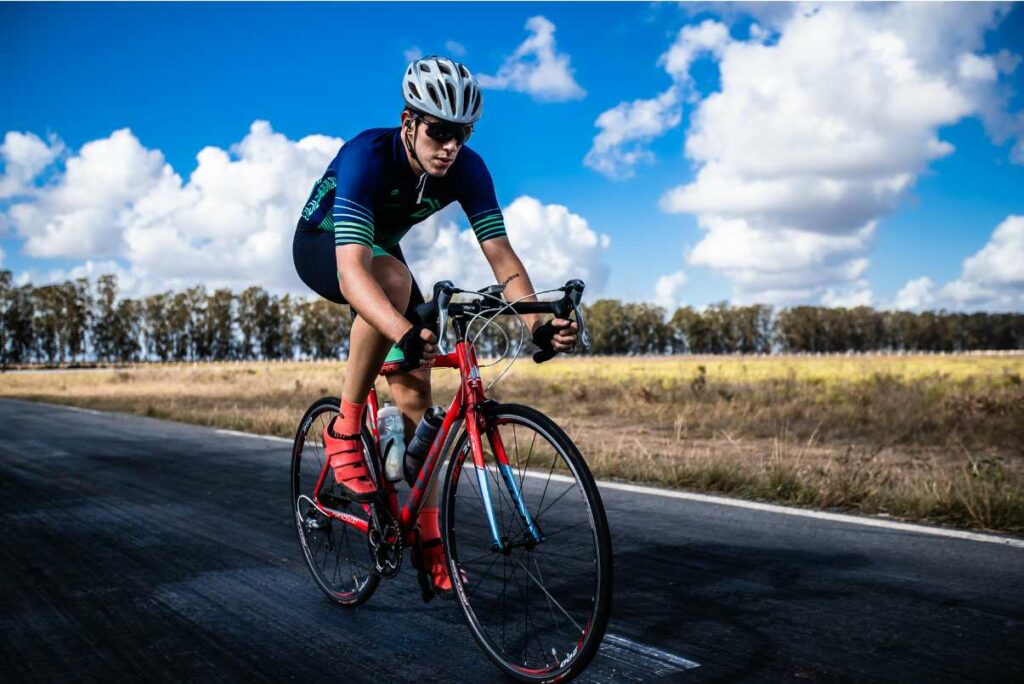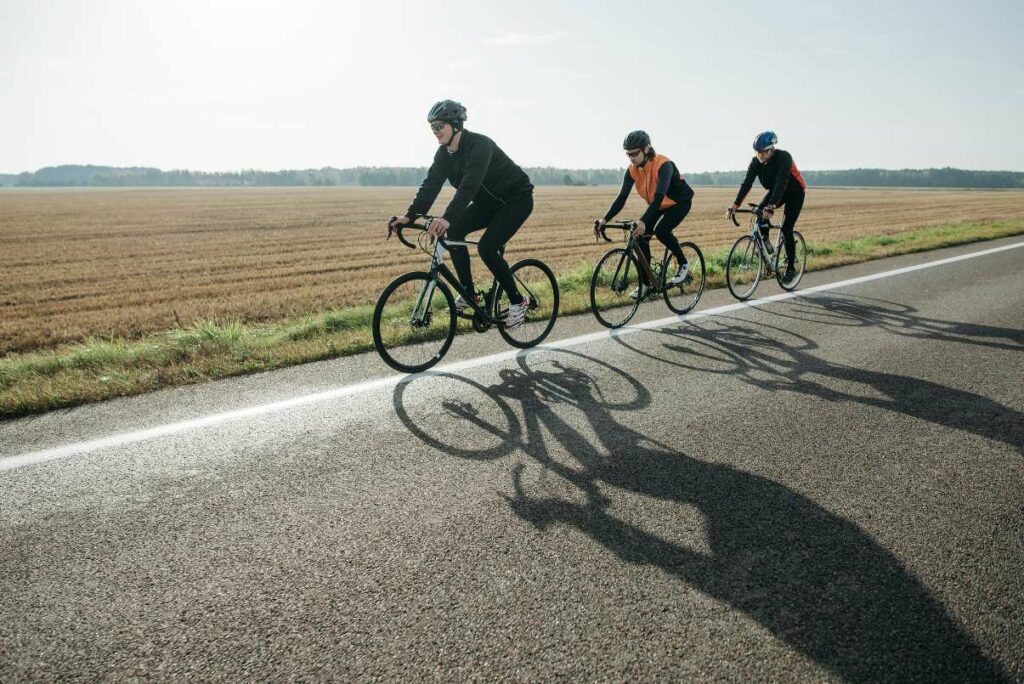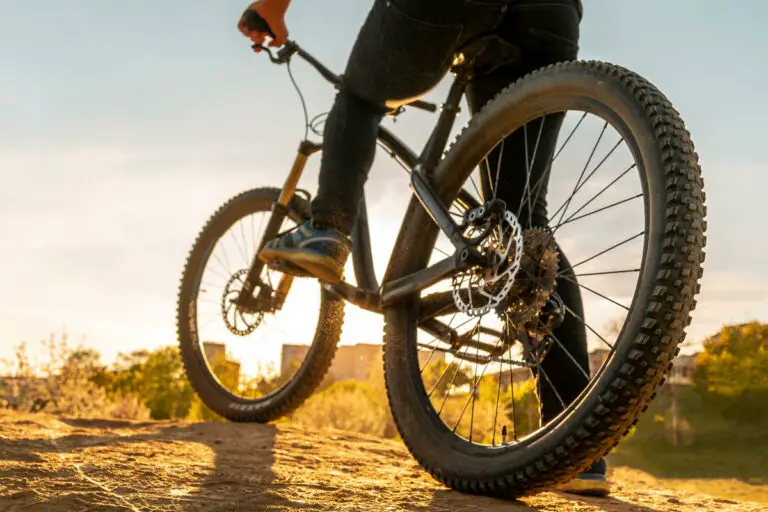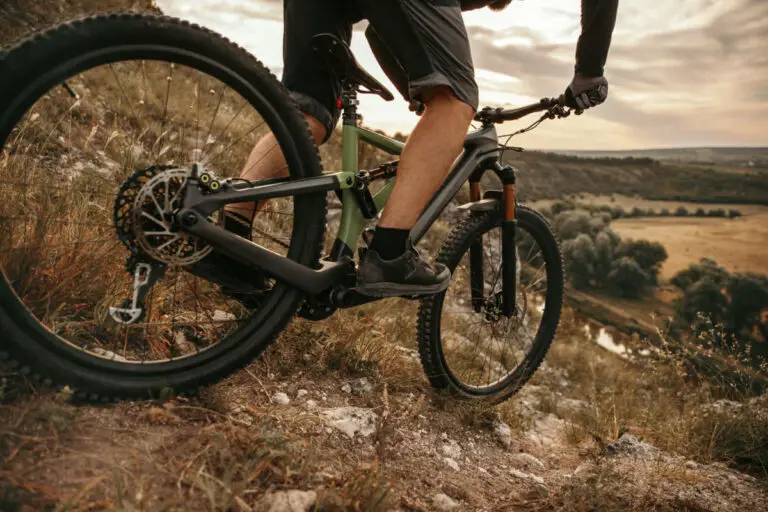How Fast Can A Bike Go? The 4 Factors That Affect Bicycle Speeds

Bicycle speed is a fascinating subject because it contains several variables that might impact how quickly a bike can travel.
The sort of bike itself, the rider’s skill and fitness level, the terrain, the weather, and even the boundaries of what is feasible on two wheels are some of these variables.
We will go into these elements and examine the various facets of bicycle speed in greater detail in this post.

The Limits of Bicycle Speed:
There are physical restrictions to what is feasible on two wheels, even if all of the elements mentioned thus far can influence a bike’s speed to some extent.
The record-breaking bicycle speed is 133.78 mph, attained by Fred Rompelberg in 1995 while riding a modified bike with a streamlined fairing with a tailwind.
It should be emphasized that this speed was only attained under precise, controlled circumstances, therefore it may not be an accurate representation of what is feasible in normal riding circumstances.
Generally speaking, depending on the rider’s skill level and the terrain, the fastest speeds that can be reached on a bike without the help of external assistance like a motor or a downhill slope are likely to be in the region of 40-50 mph.
Types of Bikes and Their Top Speeds:
The type of bike a person rides is one of the key elements that affect their speed.
Each sort of bike has its own set of attributes that determine its capacity for speed and is created for a certain purpose.
For instance, road bikes are made to be quick and effective on paved surfaces.
To reduce wind resistance, they frequently include aerodynamic handlebars and frames, lightweight frames, and narrow tires.
Depending on their power output and aerodynamics, a fit and talented rider on a road bike might expect to reach speeds of about 30 to 40 mph on level terrain.
Mountain bikes, on the other hand, have wider tires, greater suspension, and a more upright riding position because they are made for off-road terrain.
Mountain bikes may still travel at a high pace on downhill portions of trails even though they are slower than road bikes on paved surfaces.
On steep, smooth slopes, an experienced mountain biker on a downhill bike can travel at speeds of up to 50 mph.
Although hybrid bikes, which combine elements of both road and mountain bikes, are adaptable and useful for a range of tasks, they are often slower than either road or mountain bikes on their respective surfaces.

Rider Ability and Fitness:
The speed of a bike is significantly influenced by the rider’s skill and degree of fitness.
A rider who is more competent and fit will typically be able to produce more power and ride quicker than a rider who is less skilled or fit.
In road cycling, where the rider’s aerodynamics and power output may significantly affect speed, this is particularly true.
Body weight and position, in addition to knowledge and fitness, can have an impact on a bike’s speed.
All other factors being equal, a lighter rider will typically be able to reach higher speeds than a heavier rider.
Similar to this, a rider would typically be able to travel quicker than one who is sitting erect on the bike if they are squatting low and in an aerodynamic stance.
There are a number of methods one can use to increase their biking skills and fitness.
Training and practicing riding a bike can help to increase competence and confidence while also enhancing muscle strength and endurance.
A balanced diet and consistent exercise can also help to increase general fitness and help you perform better on the bike.
Furthermore, it’s critical to ride within one’s comfort zone and be conscious of one’s own limitations.
The danger of accidents and injuries can be increased by pushing oneself too hard or trying to ride above one’s capabilities.
Riders can increase their skill and fitness over time and reach higher speeds on the bike by balancing training and practice with rest and recovery.
Terrain and Conditions:
A bike’s speed can also be significantly influenced by the terrain and the weather. Gravity inherently causes a bike to travel faster on flat or downhill terrain.
The rider’s power output and the gradient of the hill, however, will limit a bike’s top speed when traveling uphill.
Similar to how a rider’s speed can be influenced by wind conditions, a bike’s speed can likewise be increased by a tailwind and decreased by a headwind.
The traction and stability of a bike can be impacted by rain, snow, and other bad weather, which can therefore have an impact on its speed.
For instance, slick pavement can make a bike slip or slide, and loose sand or gravel might impair stability and traction.




